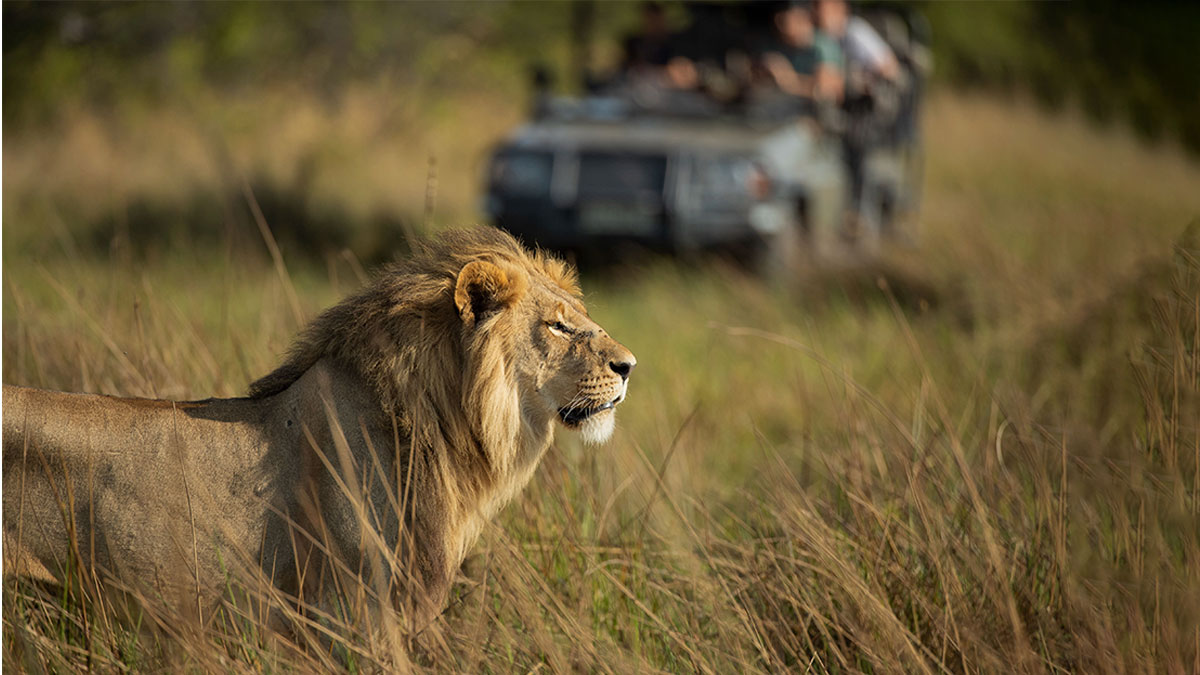In partnership with local Botswana non-profit, CLAWS Conservancy (Communities Living Among Wildlife Sustainably), Wilderness is continuing to make a positive impact to help reduce human-wildlife conflict in the Okavango Community Trust (OCT) areas neighbouring Wilderness Vumbura Plains.
“Closely aligned with our Impact strategy pillar of Protect, and our commitment to do more for the reduction of human-wildlife conflict in the OCT community areas, we are proud to be working closely with CLAWS in this region and to see the positive results of our collective conservation efforts over the past six months. By offering both a logistical and physical presence, as well as monitoring and additional collaring where needed, we have assisted CLAWS to refine and further improve their work in mitigating conflict through fostering co-existence and the expansion of their early warning system”, noted Wesley Hartmann, Wilderness Botswana Conservation Ecologist.
CLAWS Lion Program Coordinator, Virginia Pelayo Malet added that this work is critical due to the significant decline in lion populations over the past 25 years. “The initiative focuses on the development of the first-of-its-kind Lion Alert System that aims to mitigate human-lion conflicts by providing real-time warnings to farmers when satellite collared lions approach. Our Lion Response Team (LRT), supported by village volunteers, is then able to intercept the lions, using deterrents to encourage them to retreat to safer areas”, she said.
Important impact measurements and results from the first six months of implementation (Oct 2023 – Mar 2024) have highlighted a significant increase in the proportion of alerts attended, the number of conflicts averted, and total distance lions moved away; demonstrating a positive impact on mitigating human-lion conflicts and reducing lion mortality. The number of known lions in the study area has also increased, probably due to a better understanding of lion groups and composition in the area at these early stages of implementation. Additionally, over 300 individuals have signed up to receive alerts, with over 78 alerts dispersed during the initial six months since Wilderness support began.
“While we have increased the number of collared lions and the growth of the Lion Alert System userbase, we have noted a decrease in volunteer engagement and still face some challenges with regards to data collection, network accessibility, and the availability of deterrent equipment, which will now form part of our improvement plan going forward”, added Wesley.
The Okavango region of Northern Botswana is central to the largest stronghold of lions in Southern Africa, and a key region for connectivity between other regional lion populations within the Kavango-Zambezi Transfrontier Conservation Area (KAZA TFCA). However, villagers living along the northern edge of the Okavango struggle with continued lion predation of their livestock, and in some instances, have killed entire lion prides in retaliation. On African landscapes, lion populations have decreased by a startling 50% over the last 25 years, owing to conflict with humans and habitat loss.
“Our CLAWS partnership continues to demonstrate clear outcomes that we’re hoping to achieve here to not only empower cattle farmers to increase commercial sales of their beef product, but to also provide the tools and training required to improve co-existence between the farmers and the local lion populations. Through our ongoing support of CLAWS’ field and research work, we hope to proactively implement interventions to ensure the lion populations’ viability in the northern Okavango, and in particular, our Vumbura Concession”, Wesley concluded.








